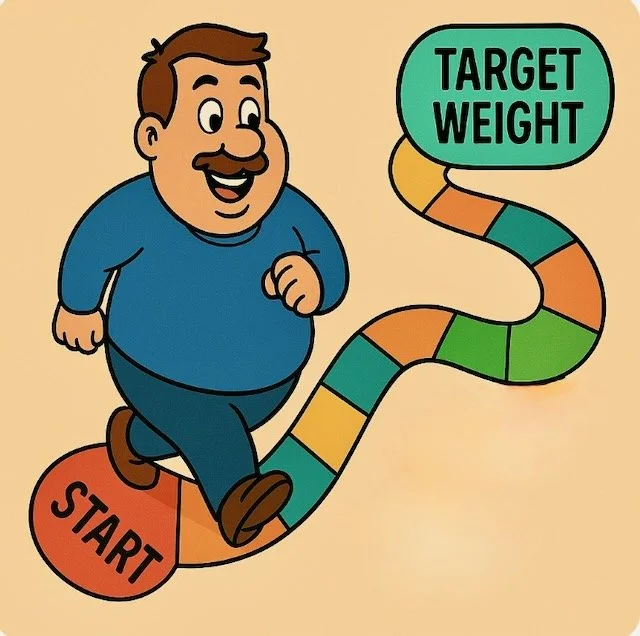Typical Course of GLP-1 Therapy
While everyone’s journey on semaglutide or tirzepatide (GLP-1s) is different, there are enough commonalities to come up with a “typical” patient’s experience with these medications. I have broken down this path into four different “phases” to help guide your expectations while progressing down your own unique GLP-1 journey.
To keep things relatively simple, I have used dosages for semaglutide only. Patient experiences in my opinion vary little between semaglutide and tirzepatide, until one gets to high doses where tirzepatide does appear to work slightly better.
Lastly, I have listed on possible negative side effects. Beneficial side effects are not listed for clarity, but can be seen on a separate blog post.
Here is the typical “journey”. Remember that everyone is different!
Phase 1 - Starting and Ramping Up (month 1 to 3)
Dose: If one has had no prior GLP-1 therapy, they will be started on a very low dose of 0.25mg a week. Starting low is crucial to minimize the possibility of gastrointestinal side effects.
In two to four weeks, the dose is increased to 0.5mg - if the patient is not experiencing any side effects. I follow the simple rule that the presence o side effects rules out increasing the dose for the next injection.
After four weeks on 0.5mg, the dose can be increased to 1.0mg (but doesn’t have to be - many people can successfully lose all the weight they desire at 0.5mg).
Side effects: Nausea/abdominal pain occurs in about 25% of patients. This is generally tolerated without treatment and limited to day after injecting. Zofran is very effective in treating this. Occasional worsening of heartburn can be treated with proton-pump inhibitors like Nexium.
Some people report decreased energy after injecting during Phase 1. It has hard to tease out whether this is a direct effect of the drug or simply due to decreased caloric (energy) intake. It typically abates by month 2.
Weight loss: Varies. First month on therapy can be dramatic (> 10lbs). Large amounts of weight loss (5-15 lbs) are generally reflect water loss.
Phase 2 - Staying the Course (month 3 and beyond)
Dose: 0.5 to 1.5 mg weekly. Once the patient has “ramped” up, they generally stay on the same dose (typically 1.0 mg) for an extended period of time. Increased dosages can be considered if weight loss stalls, but again only in the absence of side effects.
Side effects: With the exception of heartburn, most side effects have disappeared.
Weight loss: The target weight loss at this point is a pound a week minimum until one gets to within five pounds of an agreed upon target weight.
Phase 3 - Pushing to Target Weight
Dose: 0.5 to 1.5 mg weekly. Phase 3 can be the most difficult. Weight loss typically slows down dramatically at five to ten pounds above target weight. Sometimes it stalls (plateaus) completely. It was easy before, now it is hard. This is the time to double down on exercise (which is often more rewarding and tolerable because of the lost weight. Patients need to watch for fats creeping into their diets!
Side effects: Few to none.
Weight loss: Slow to stalled completely.
Phase 4 - Maintenance
Dose: 0.25 to 1.0 mg weekly. Maintenance can be as little as a few months to forever. Clients are not expected to lose weight anymore, so they don’t need as much medication. Maintenance is optional. However, in patients over 65, those with a history of prediabetes/diabetes, anyone with a cardiovascular disease, and anyone who has been severely overweight should expect to stay on medication forever due to the significant reduction in disability and death. Most patients who go off the drug cannot successfully maintain their target weight without maintenance.
Side effects: Few to none.
Weight loss: None
Hopefully this helps you. If you have any questions, please email me directly drjeff@edmanclinic.net
Jeffrey C Edman MD
Sept 30, 2025

